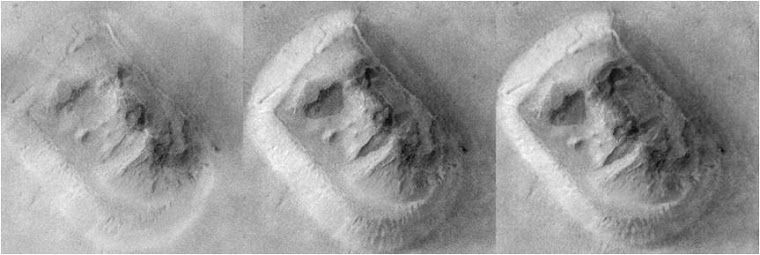Astronomers Find New 'Runaway' Stars
By ANDREA THOMPSON
Space.com
LONG BEACH, Calif. (Jan. 7) — A total of 14 young stars racing through clouds of gas like bullets, creating brilliant arrowhead structures and tails of glowing gas, have been revealed by NASA's Hubble Space Telescope. They represent a new type of runaway stars, scientists say.
The discovery of the speedy stars by Hubble, announced here today at the 213th meeting of the American Astronomical Society, came as something of a shock to the astronomers who found them.
"We think we have found a new class of bright, high-velocity stellar interlopers," said study leader Raghvendra Sahai of NASA's Jet Propulsion Laboratory in Pasadena, Calif. "Finding these stars is a complete surprise because we were not looking for them. When I first saw the images, I said 'Wow. This is like a bullet speeding through the interstellar medium.'"
The arrowhead structures, or bow shocks, seen in front of the stars are formed when the stars' powerful stellar winds (streams of neutral or charged gas that flow from the stars) slam into the surrounding dense gas, like a speeding boat pushing through water on a lake.
The strong stellar winds suggest that the stars are young, just a few million years old, the team concluded. Most stars produce powerful winds either when they are very young or very old; and only very massive stars (with masses greater than 10 times that of the sun) can keep generating these winds throughout their lifetimes.
But the objects Sahai and his team found aren't very massive, because they don't have glowing clouds of ionized gas around them. They appear to be medium-sized stars up to eight times more massive than the sun.
The stars' youth is also evidenced by the fact that the shapes of nebulas around dying stars are very different from what is seen around the stars found by Hubble, and old stars are almost never found near dense interstellar clouds, as these stars are.
Runaways
The bow shocks that the stars created in those interstellar clouds could be anywhere from 100 billion to a trillion miles wide (the equivalent of 17 times to 170 times the width of our solar system, out to the orbit of Neptune).
These bow shocks indicate that the stars are traveling fast, more than 112,000 mph (180,000 kph) with respect to the dense gas they're plowing through –- roughly five times faster than typical young stars.
Sahai and his team think the young stars are runaways that were jettisoned from the clusters they were born in.
"The high-speed stars were likely kicked out of their homes, which were probably massive star clusters," Sahai said.
There are two possible scenarios for how this stellar expulsion could have happened: One way is if one star in a binary system exploded as a supernova and the partner got kicked out. Another is a collision between two binary star systems or a binary system and a third star. One or more of these stars could have picked up energy from the interaction and escaped the cluster.
Assuming the youthful phase of the stars lasts only for a million years and that the stars are traveling at 112,000 mph, they have traveled about 160 light-years, Sahai said.
Tip of the Iceberg
The stars spotted by Sahai and his team aren't the first stellar runaways astronomers have found. The Infrared Astronomical Satellite (IRAS) spied a few similar-looking objects in the late 1980s.
But those stars produced much larger bow shocks that the stars found by Hubble, suggesting they are more massive stars with more powerful stellar winds.
"The stars in our study are likely the lower-mass and/or lower-speed counterparts to the massive stars with bow shocks detected by IRAS," Sahai said. "We think the massive runaway stars observed before were just the tip of the iceberg. The stars seen with Hubble may represent the bulk of the population, both because many more lower-mass stars inhabit the universe than higher-mass stars, and because a much larger number are subject to modest speed kicks."
These renegade stars aren't easy to find though because "you don't know where to look for them because you cannot predict where they will be," Sahai explained. "So all of them have been found serendipitously, including the 14 stars we found with Hubble."
Sahai and his team were actually looking for pre-planetary nebulas, the puffed-up aging stars on the verge of shedding most of their layers to become glowing planetary nebulas.
The astronomers are planning follow-up studies to search for more interlopers, as well as study what effect they have on the gas surround them.
"One of the questions that these very showy encounters raise is what effect they have on the clouds," said study team member Mark Morris of the University of California, Los Angeles. "Is it an insignificant flash in the pan, or do the strong winds from these stars stir up the clouds and thereby slow down their evolution toward forming another generation of stars?"
© Imaginova Corp. All rights reserved.
2009-01-07 17:01:48
Wednesday, January 7, 2009
Subscribe to:
Comments (Atom)
